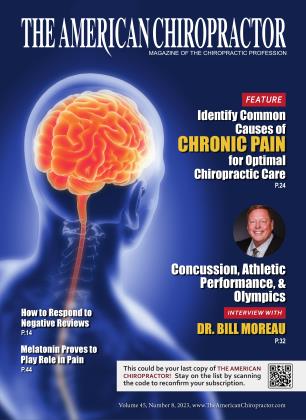We often discuss the importance of vitamins C and D for osseous tissue health. But have you considered the importance of adequate essential minerals such as calcium, copper, iron, and zinc to connective tissue health? Copper is a critical component of enzyme activity, relieving achy joints and bones, supporting healthy cardiovascular function, improving energy and metabolism, and promoting strong hair, skin, and nails. The human body typically contains between 50 and 120 mg of copper, with almost two-thirds found in the bones and muscles. The amount of copper in the body varies with copper intake, absorption, gastrointestinal health, and elimination rates; the liver is a key factor in maintaining copper balance in the blood plasma [12].
Another factor affecting copper levels is that absorption decreases as copper intake increases, with a range of 50 percent absorption at less than 1 mg/day to under 20 percent absorption above 5 mg/day. The human body’s ability to to effectively regulate absorption, retention, and elimination protects against deficiency and toxicity [3].
Modern diets often do not provide the necessary copper for optimal health due to deficient agricultural practices, nutrient loss during transportation and storage, and reduced nutrient-dense food choices [4]. It is common for people to get below the adult recommended daily intake (RDI) of 900 mcg/day. The European Food Safety Authority’s Scientific Committee recently reviewed the RDI for copper. It concluded that no copper retention is expected to occur with an intake up to 5 mg per day [5].
What will copper do for the joints and bones? Lysyl oxidase is a cuproenzyme (copper-dependent enzyme). It is present in collagen and elastin and uses lysine, hydroxylysine, and copper to cross-link and develop connective tissue, including bones, joints, and skin [6.7,8,9,io] studies have shown that copper can inhibit osteoclastic resorption and improve the growth of osteoblastic cells, with the presence of copper stimulating mesenchymal stem cells toward osteogenic lineage [1W2-13]. Dietary copper deficiencies have been demonstrated to contribute to bone fragility and reduced mechanical strength associated with defects in bone collagen formation and skeletal problems [1415].
Edward Griffen, ND earned his Naturopathic Doctorate from the Southwest College of Naturopathic Medicine. His teaching experience includes college students and natural health retailers. Dr. Griffen is currently Educational Manager at Natural Immunogenics. To learn more call 888-3288840, email [email protected], or visit www.Agentyn23.com
References
1. Olivares M., Uauy R. Limits of metabolic tolerance to copper and biological basis for present recommendations and regulations. Am. J. Clin. Nutr. 1996;63:846S-852S. doi: 10.1093/ajcn/63.5.846.
2. Tumlund J.R., Keyes W.R., Peiffer G.L., Scott K.C. Copper absorption, excretion, and retention by young men consuming low dietary copper determined by using the stable isotope 65Cu. Am. J. Clin. Nutr. 1998;67:1219-1225. doi: 10.1093/ ajcn/67.6.1219.
3. Tumlund J.R. Human whole-body copper metabolism. Am. J. Clin. Nutr 1998;67:960S-964S. doi: 10.1093/ ajcn/67.5.960S.
4. Pizzomo, Joseph. "Thoughts on a Unified Theory of Disease.” Integrative Medicine: A Clinician's Journal, Jan. 2021, pp. 9.
5. EFSA Total copper intakes below new safe level. Published: 17 January 2023
6. Food and Nutrition Board Dietary Reference Intakes for Vitamin A, Vitamin K, Arsenic, Boron, Chromium, Copper, Iodine, Iron, Manganese, Molybdenum, Nickel, Silicon, Vanadium. National Academies Press; Washington, DC, USA: 2001.
7. Dahl S., Rucker R., Niklason L. Effects of copper and cross-linking on the extracellular matrix of tissue-engineered arteries. Cell Transpl. 2005;14:861-868. doi: 10.3727/000000005783982936.
8. John J. Nutrition and bone health. In: Mahan L., editor. Escott-Stump Krause's Food, Nutrition & the Nutrition Care Process. Elsevier; Amsterdam, The Netherlands: 2012.
9. Rucker R.B., Murray J., Riggins R.S. Nutritional copper deficiency and penicillamine administration: Some effects on bone collagen and arterial elastin crosslinking. Adv Exp. Med. Biol. 1977;86:619-648.
10. Rucker R., Kosonen T., Clegg M., Mitchell A., Rucker B., Uriu-Hare J., Keen C. Copper, lysyl oxidase, and extracellular matrix protein cross-linking. Am. J. Clin. Nutr 1998;67:996S-1002S. doi: 10.1093/ ajcn/67.5.996S.
11. Li B., Yu S. In vitro study of the effects of copper ion on osteoclastic resorption in various dental mineralized tissues. Chin. J. Stomatol. 2007;42:110-113.
12. Milkovic L., Hoppe A., Detsch R., Boccaccini A.R., Zarkovic N. Effects of Cu-doped 45S5 bioactive glass on the lipid peroxidationassociated growth of human osteoblast-like cells in vitro. J. Biomed. Mater. Res. Part A. 2014;102:3556-3561. doi: 10.1002/ jbm.a.35032.
13. Ding H., Gao Y.-S., Wang Y., Hu C., Sun Y., Zhang C. Dimethyloxaloylglycine increases the bone healing capacity of adipose-derived stem cells by promoting osteogenic differentiation and angiogenic potential. Stem Cells Dev. 2014;23:990-1000. doi: 10.1089/ scd.2013.0486.
14. Rucker R., Riggins R., Laughlin R., Chan M., Chen M., Tom K. Effects of nutritional copper deficiency on the biomechanical properties of bone and arterial elastin metabolism in the chick. J. Nutr. 1975;105:1062-1070. doi: 10.1093/jn/l 05.8.1062.
15. Jonas J., Bums J., Abel E.W., Cresswell M.J., Strain J.J., Paterson C.R. Impaired mechanical strength of bone in experimental copper deficiency. Ann. Nutr Metab. 1993;37:245252. doi: 10.1159/000177774.
 View Full Issue
View Full Issue






